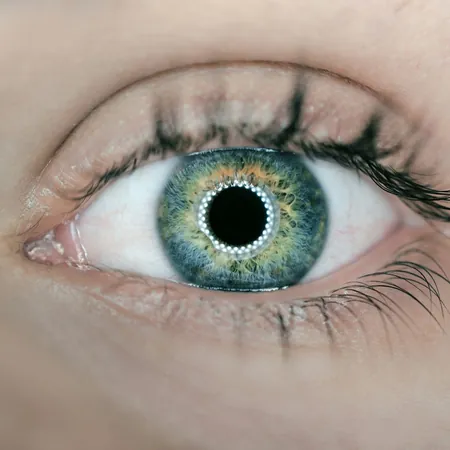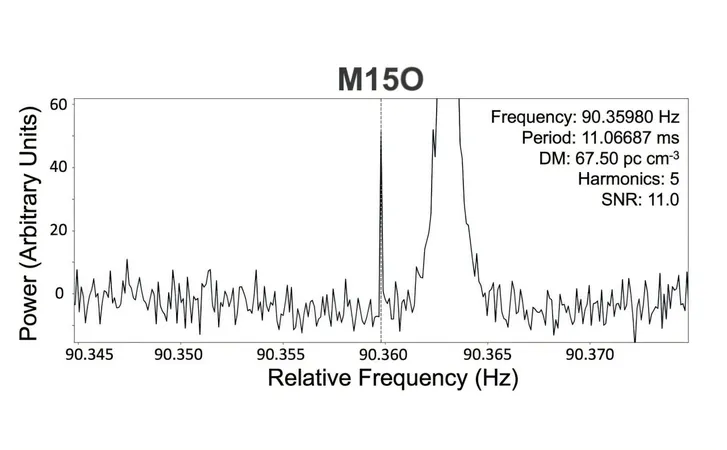
Shocking Study Reveals Link Between Food Insecurity and Glaucoma: What You Need to Know!
2025-04-08
Author: Arjun
Groundbreaking Findings
A groundbreaking new study has unveiled a startling connection between glaucoma and food insecurity, raising urgent questions about the societal impacts of dietary access on eye health. The research, a comprehensive population-based cross-sectional study, sheds light on the hidden consequences of food insecurity beyond its well-documented ties to obesity and chronic diseases.
Understanding Food Insecurity
Food insecurity, characterized by limited access to nutritious food, has long been implicated in promoting unhealthy behaviors, from poor diet quality to heightened stress levels. This recent study finds that these factors may contribute significantly to the risk of developing glaucoma, a leading cause of irreversible blindness worldwide. Researchers, led by Ramin Talebi from Sidney Kimmel Medical College at Thomas Jefferson University, suggest that chronic stress and fluctuating dietary habits associated with food insecurity could play a pivotal role in driving the development of this debilitating eye condition.
Study Overview
The analysis drew from data collected through the All of Us research program, which has compiled extensive health records from 2015 through July 2022. Out of nearly 79,000 participants, over 12,000 reported experiences of food insecurity, and nearly 3,000 had been diagnosed with glaucoma. The figures also included participants with other eye diseases, such as age-related macular degeneration and diabetic retinopathy.
Statistics and Findings
Notably, researchers employed comprehensive regression analyses to evaluate the relationship between food insecurity and various eye diseases. The findings indicated a significant increase in the odds of glaucoma among individuals facing food scarcity, with an adjusted odds ratio of 1.43—pointing to a 43% heightened risk compared to their food-secure counterparts. Intriguingly, the study found no equivalent risk elevation associated with age-related macular degeneration, diabetic retinopathy, or cataracts.
Implications and Recommendations
The implications of these findings are profound. While the avenues through which food insecurity may contribute to glaucoma need further exploration, the study emphasizes the need for a holistic approach to health. Talebi and colleagues urge for more targeted research that delves into the specific disease mechanisms at play, advocating for enhanced public health strategies aimed at mitigating the effects of food insecurity on vision health.
Call to Action
Moreover, this research highlights a concerning lack of attention to how social determinants of health influence not just eye diseases but overall health outcomes. Talebi suggests that interventions aimed at ensuring access to healthy food could play a crucial role in preventing vision loss and improving health equity.
Conclusion
In a world grappling with escalating food insecurity, this study serves as a clarion call for immediate action—one that calls for policymakers, healthcare providers, and communities to collaborate in addressing these pressing issues. As the link between diet and eye health becomes clearer, the need for holistic health improvement strategies has never been more urgent. Will we heed this warning, or will we allow food insecurity to continue blinding us to its true costs? Stay informed and advocate for healthier communities—your eyesight could depend on it!





 Brasil (PT)
Brasil (PT)
 Canada (EN)
Canada (EN)
 Chile (ES)
Chile (ES)
 Česko (CS)
Česko (CS)
 대한민국 (KO)
대한민국 (KO)
 España (ES)
España (ES)
 France (FR)
France (FR)
 Hong Kong (EN)
Hong Kong (EN)
 Italia (IT)
Italia (IT)
 日本 (JA)
日本 (JA)
 Magyarország (HU)
Magyarország (HU)
 Norge (NO)
Norge (NO)
 Polska (PL)
Polska (PL)
 Schweiz (DE)
Schweiz (DE)
 Singapore (EN)
Singapore (EN)
 Sverige (SV)
Sverige (SV)
 Suomi (FI)
Suomi (FI)
 Türkiye (TR)
Türkiye (TR)
 الإمارات العربية المتحدة (AR)
الإمارات العربية المتحدة (AR)